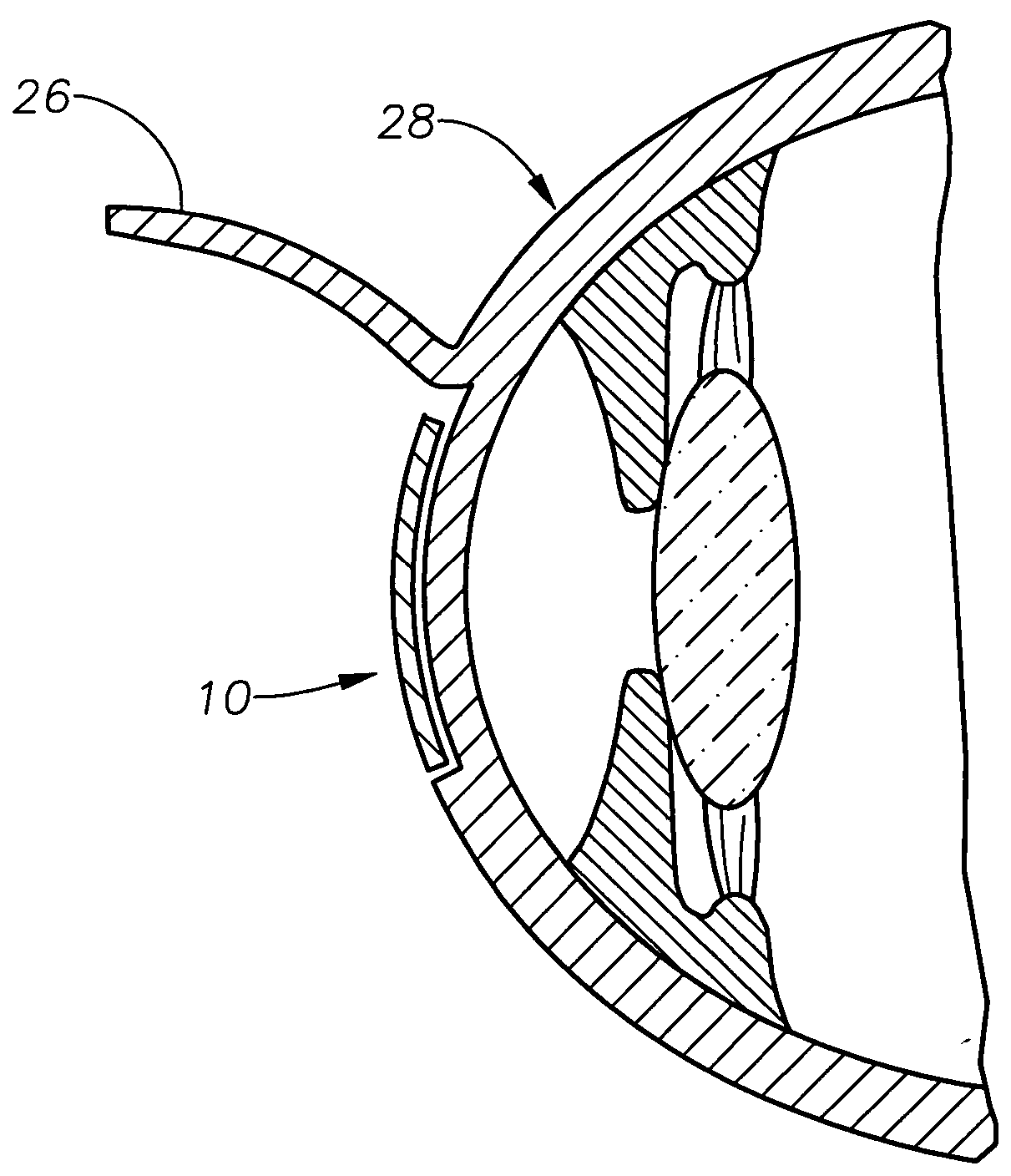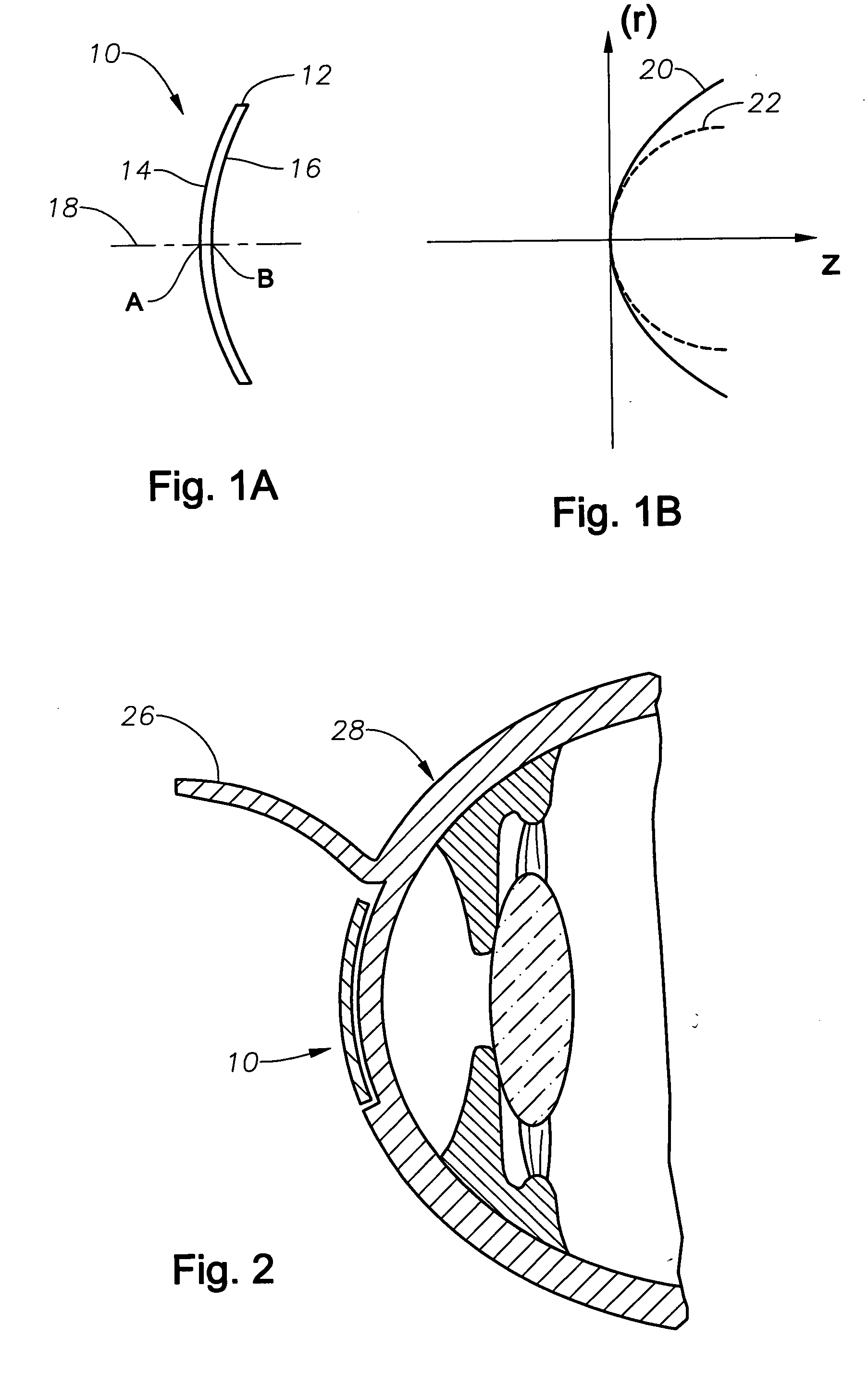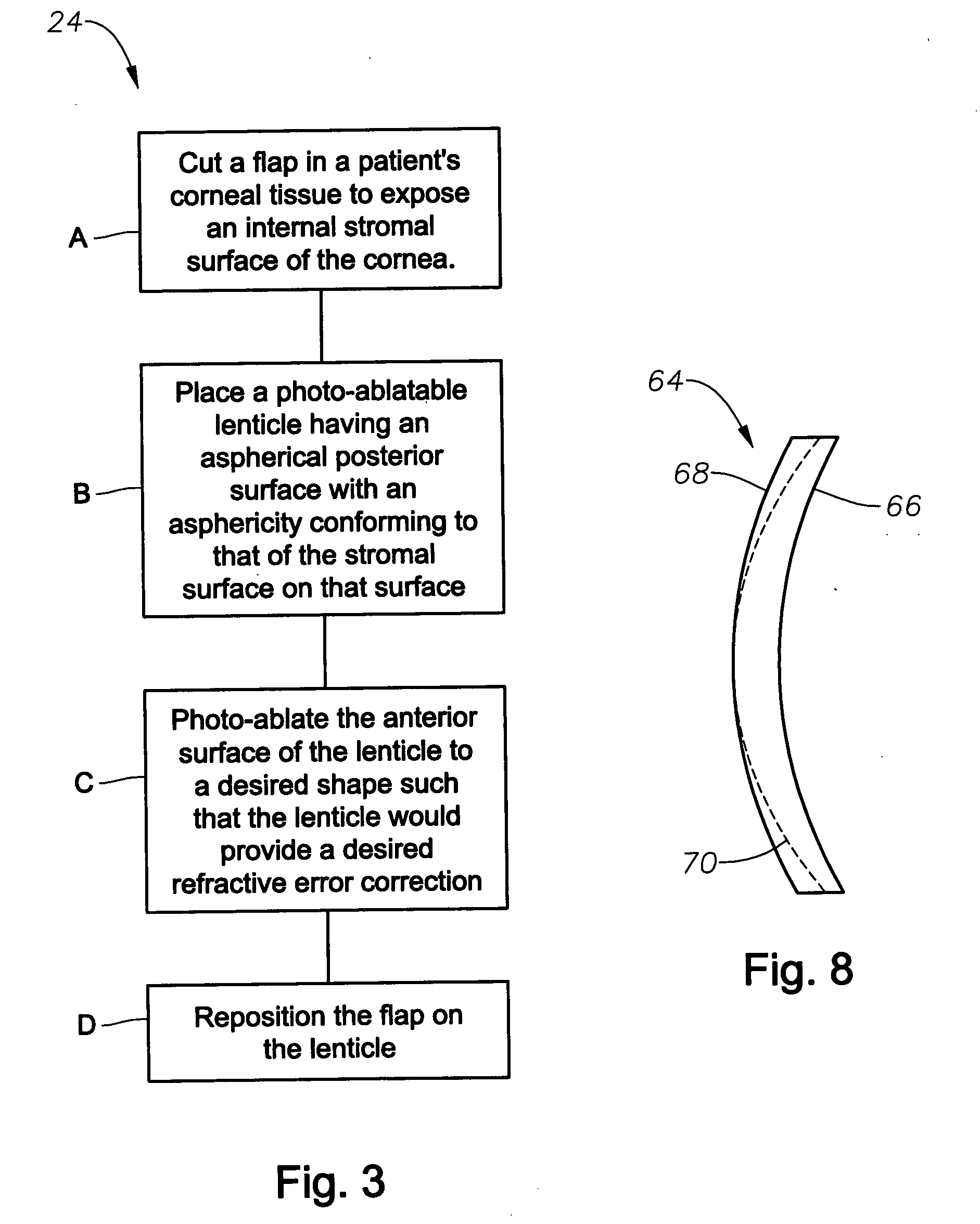Aspheric lenticule for keratophakia
a lenticule and keratophakia technology, applied in the field of corneal inlay lenses, can solve the problems of corneal damage or vision degradation, bulging out of the central optical zone of the eye, and the conventional corneal inlay lenses suffer from a number of shortcomings, and achieve the effect of correcting a refractive error
- Summary
- Abstract
- Description
- Claims
- Application Information
AI Technical Summary
Benefits of technology
Problems solved by technology
Method used
Image
Examples
Embodiment Construction
[0029]FIG. 1A schematically depicts a lenticule 10, herein also referred to as a corneal implant or a corneal inlay lens, for implantation in a patient's cornea that includes an optical body 12 defined by a anterior surface 14 and a posterior surface 16 adapted for placement on an internal corneal stromal surface, as discussed in more detail below. The lenticule 10 can be formed of a biocompatible optical material, i.e., a material that is compatible with corneal stromal tissue, that is photoablatable to allow modifying its shape, e.g., by employing laser light, such that it can provide a desired optical power while implanted in a patient's cornea. Some examples of suitable materials from which the lenticule can be formed include, without limitation, silicone, ploymethylmethacrylate, polyvinylpyrrolidine, optical homopolymers and copolymers or other suitable polymeric materials.
[0030] In this exemplary embodiment, the anterior surface 14, which is generally convex, and the posterio...
PUM
 Login to View More
Login to View More Abstract
Description
Claims
Application Information
 Login to View More
Login to View More - R&D
- Intellectual Property
- Life Sciences
- Materials
- Tech Scout
- Unparalleled Data Quality
- Higher Quality Content
- 60% Fewer Hallucinations
Browse by: Latest US Patents, China's latest patents, Technical Efficacy Thesaurus, Application Domain, Technology Topic, Popular Technical Reports.
© 2025 PatSnap. All rights reserved.Legal|Privacy policy|Modern Slavery Act Transparency Statement|Sitemap|About US| Contact US: help@patsnap.com



